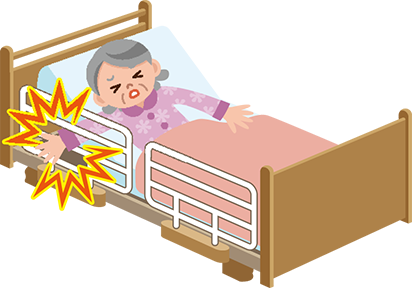Auto lock bed grip with padKneeparoⅡ/KneeparoPⅡ
Revolutionary Bed Grip Helps Transfer Safely

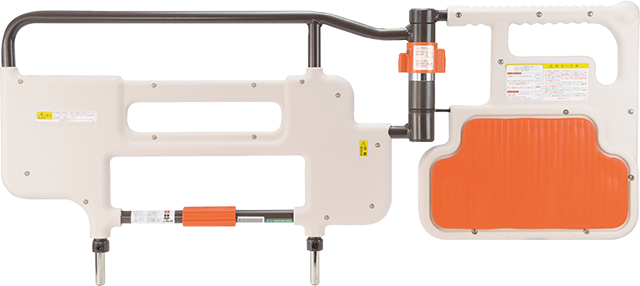
Revolutionary Bed Grip Helps Transfer Safely
This grip is used when the bed user stands up to move to a wheelchair or between a portable toilet and the bed. When not in use, it can work as a stopper to prevent the bed user from falling from the bed.
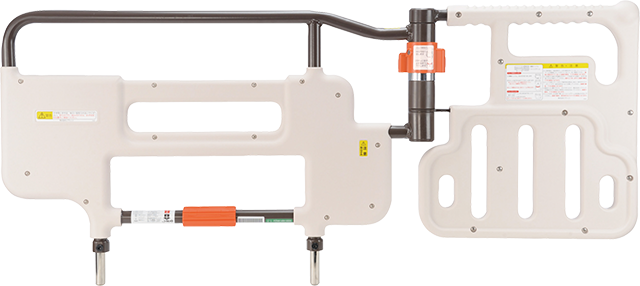

Failing to lock the grip on the Kneeparo may lead to pinching fingers in the moving joint of the grip and may cause users to fall out of bed. When lock release handle is lowered, the lock bar will descend and the grip will turn freely. When the grip is positioned every 45 degrees, the guide sensor will detect the shift and lock bar will automatically ascend to lock the grip.
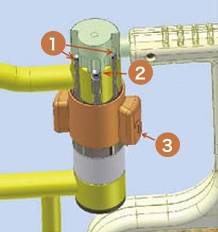
 lock bar
lock bar guide sensor
guide sensor lock release handle
lock release handle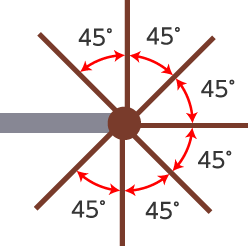
Grip positioned at every 45 degrees (top view)
Lock release handle can be lowered easily with the user’s palm or fingers without strength. The grips shape has been designed for easy gripping, featured with spherical design on the edge and wave design on the rail.
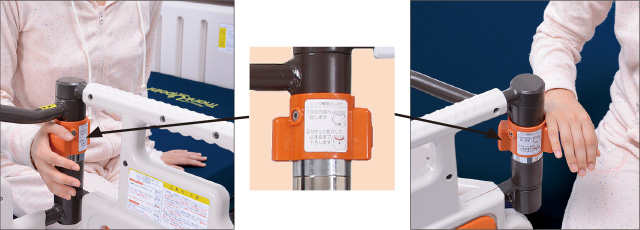
Universal design of requiring palm or fingers to release.
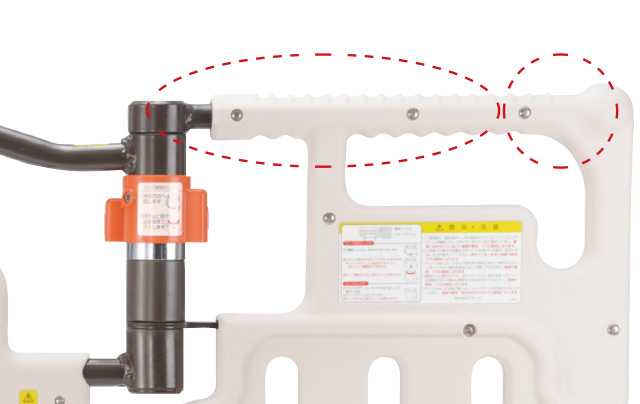
Universal wavy grip design
Injury of neck and other body parts between rails or between rail and board is common. Kneeparo is designed with safety gap dimensions to avoid such accidents.
For specific examples of bed rail accidents, please access the website of Safety Promotion Council for Medical and Home Care Bed.
(This site is only available in Japanese)
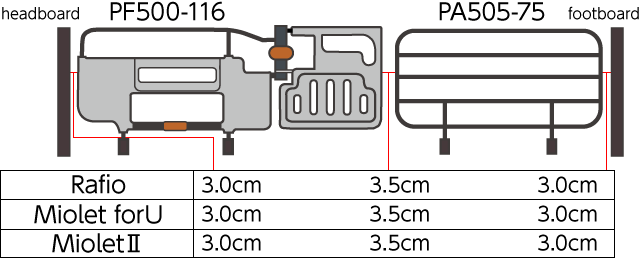
Securely attaches to the bed with a double-lock of the rotating bar and screw lock on the bottom.
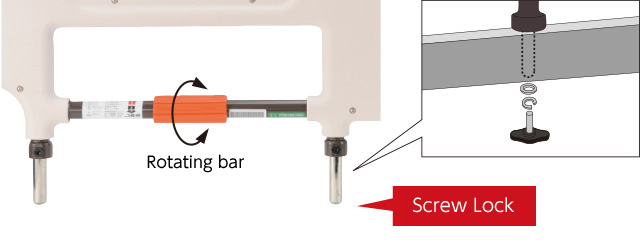
This grip is used when the bed user stands up to move to a wheelchair or between a portable toilet and the bed. When not in use, it can work as a stopper to prevent the bed user from falling from the bed.
Prevents users from falling out of bed when sitting and standing up
Independent transfer for easy, independent transfer to a wheelchair or a portable toilet
For assisted transfer to a wheelchair or a portable toilet
How to use the Kneeparo when sitting upright (in bed)
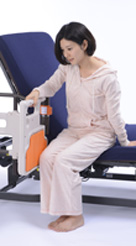
Users can prevent falling by simply holding on to the bed grip…
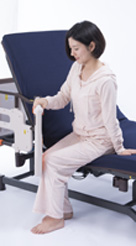
But using the Kneeparo at a 45-degree angle will lock the knees into position and reduce the likelihood of falling over.
When standing up from bed
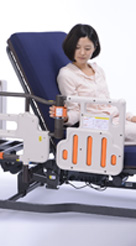
Raise back of bed and release grip
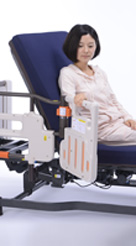
Set to 45 or 90 degrees (It will automatically lock)
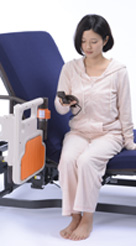
If height of bed is adjustable, set bed height to desired position. Bed higher than knee level is suggested.
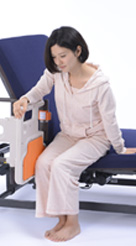
Hold on to the Kneeparo Ball on the edge and stand up while pressing your knees against the cushion. It is easier to maintain balance while standing when the knee and thighs are pressed against the grip.
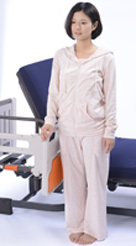
Using the Kneeparo at a 45-degree angle
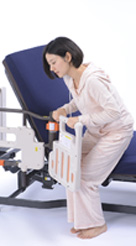

Safe standing is possible since you can use both your hand and knees to stand up.
Fundamental movement when transferring is to “adjust the height of bed.”When transferring from bed to wheelchair, have your bed height adjusted slightly higher than wheelchair seat. Conversely, when transferring from wheelchair to bed, have your bed height adjusted slightly lower than wheelchair seat.
Independent transfer from bed to wheelchair (at 90 degree angle)
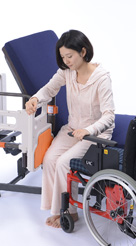
Open grip 90 degrees and have knees cushioned to the pad. Have bed height higher than wheelchair. Position wheelchair along bed and apply brakes.
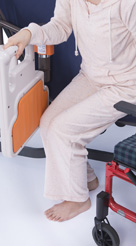
Move forward the leg on the wheelchair side. Please be careful not to move the other leg as you could injure yourself.
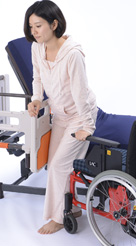
Have knees along the pad and stand up, or raise your bottom.
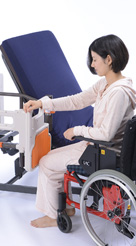
And transfer to wheelchair.
Independent transfer from bed to wheelchair (at 45 degree angle)
Although it depends on the type of wheelchair and bed, the smaller the space between wheelchair and grip the safer the transfer.
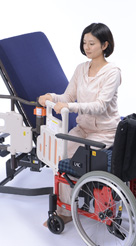
Open grip to 45 degrees and have knees touching to pad. Have bed height positioned slightly higher than the wheelchair. Position wheelchair along bed and apply brakes.

Move forward the leg on the wheelchair side. Please be careful not to move the other leg as you could injure yourself.
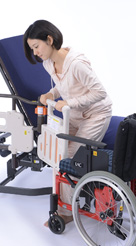
Pressing your knees against the cushion while pulling on the grip with your upper body makes it easier to lift your buttocks. Then stand up or raise up your buttocks…
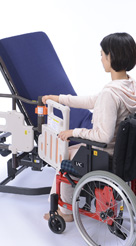
And transfer to wheelchair
Adjusting the bed height is important when moving between the bed and the wheelchair. Set the bed slightly higher than the wheelchair seat in case of moving from bed to wheelchair. Conversely when moving from wheelchair to bed, set the bed slightly lower than the wheelchair seat.
Assisted Transfer from Bed to Wheelchair (with a transfer board)
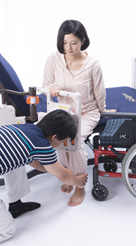
Lift up the back rest of the bed, set the bed height slightly higher than the wheelchair and set the grip part at an angle of 45 degrees. Lock the brake of the wheelchair.

Move forward the left leg. Please be careful not to move the other leg as you could injure yourself.
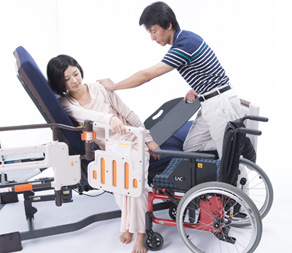
Make the patient hold the grip and place one edge of the board under the patient’s left buttock and the other on the center of the wheelchair seat.
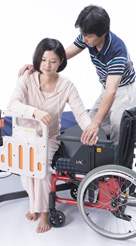
The caregiver should instruct the patient to grip the wheelchair armrest and pull. The caregiver should then place their right foot on the bed.
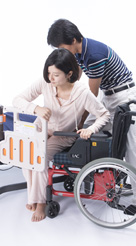
Support the left side of the waist, lean the patient towards the left arm, slightly push the right side of the buttocks, and move the patient into the wheelchair. Use the left foot to make sure the wheelchair does not move when transferring the patient.
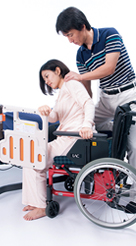
Lean the body toward the right side to shift the body weight on the right buttock and move the patient’s body until the patient sits firmly in the wheelchair.
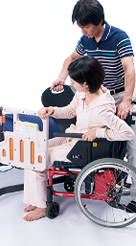
To make the transfer board easier to remove, shift the patient’s body to the left, lift the transfer board and move it back and forth to remove it.
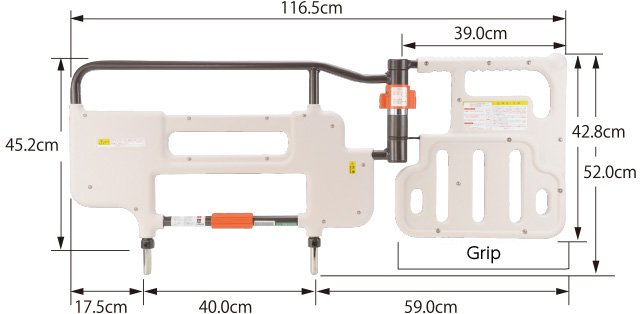
| Model | PF500-116 |
|---|---|
| Weight | 8.9kg |
| Material | Steel, zinc die cast, ABS, POM |
| Compatible Bed |
Rafio,
Miolet ForU,
P300 Series,
Ultilet ToU,
Ultilet * Carelet Series is not compatible. |
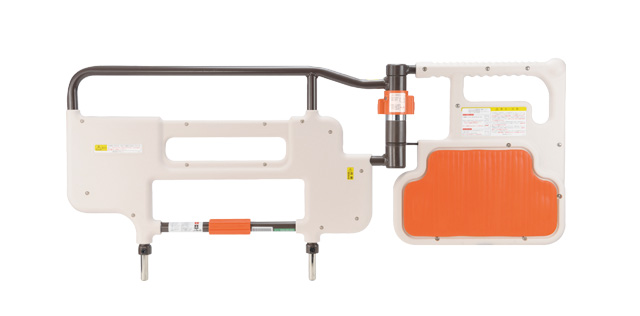
| Model | PF500-116P |
|---|---|
| Weight | 9.2kg |
| Material | Steel, zinc die cast, ABS, POM, EVA |
| Compatible Bed |
Rafio,
Miolet ForU,
P300 Series,
Ultilet ToU,
Ultilet * Carelet Series is not compatible. |
We co-developed Kneeparo Pad with professor Matsuo of Saga University. It is very helpful when patients move between the bed and a wheelchair or portable toilet. (Patent No.4802296) The shock absorbing material used for the pad is kind to the skin and reduces the pressure against knees.
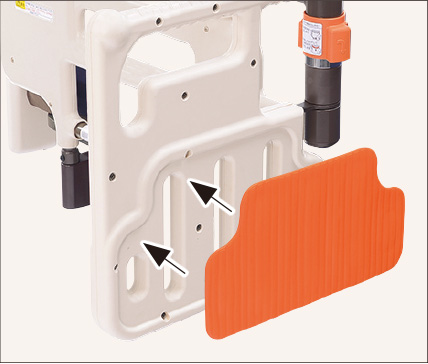
Attach to the KneeparoⅡ
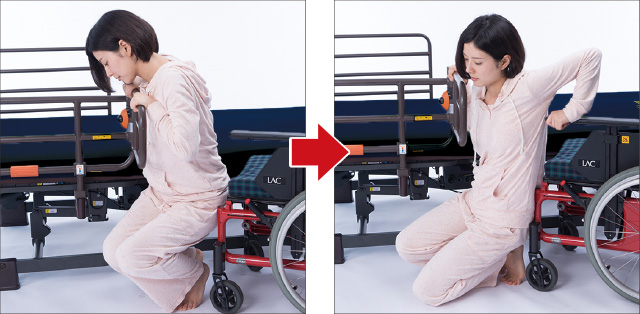
With old bed grips, patients had the risk of knees sliding off forward as in the picture(left) and even experiencing dangerous injuries as in picture(right) With Kneeparo Pad
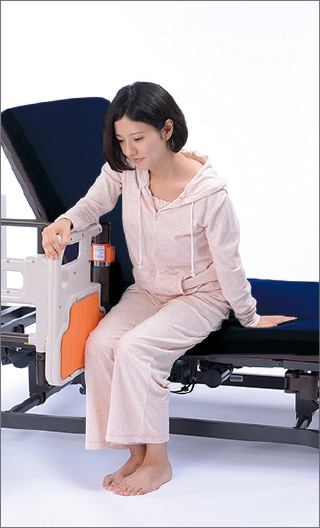
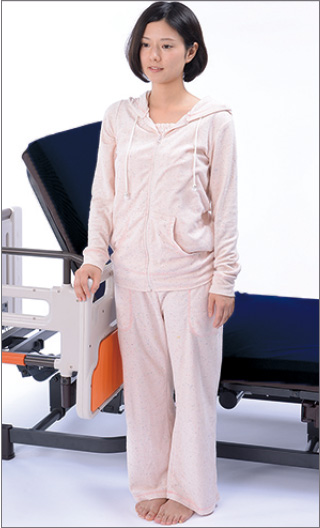
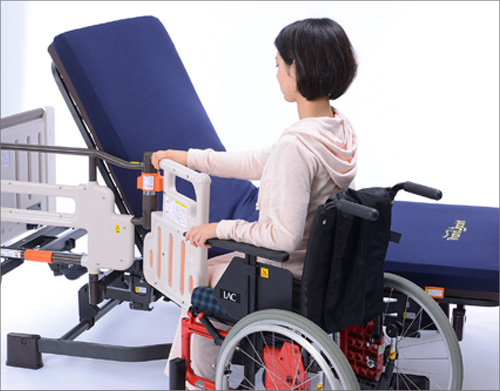
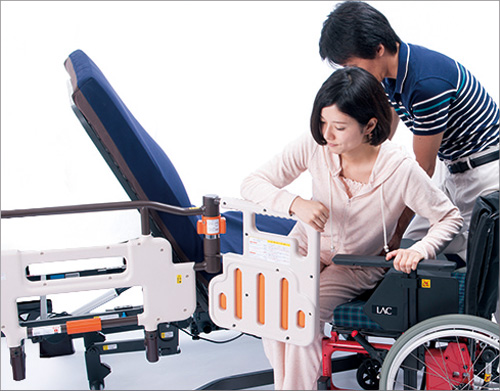
Assisting Patient’s Transfer
to Wheelchair from Behind
with a Transfer Board
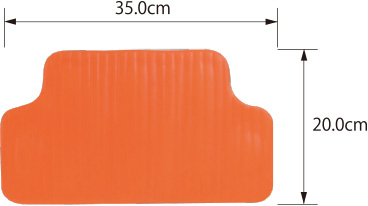
Specifications
| Model | PF500P-116 |
|---|---|
| Size | 35.0x20.0x3.3(height)cm |
| Weight | 250g |
| Material | EVA |
| Manufacture | Vietnam |

Specifications
| Model | PF500-116P |
|---|
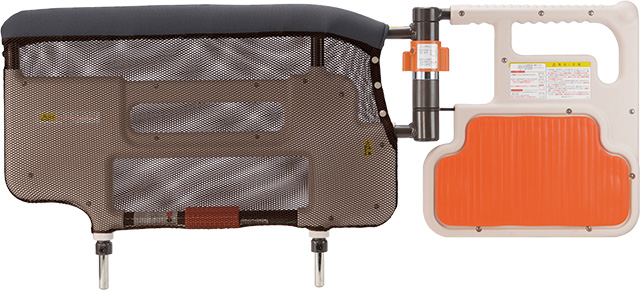
Specifications
| Model | PF500-116PS |
|---|
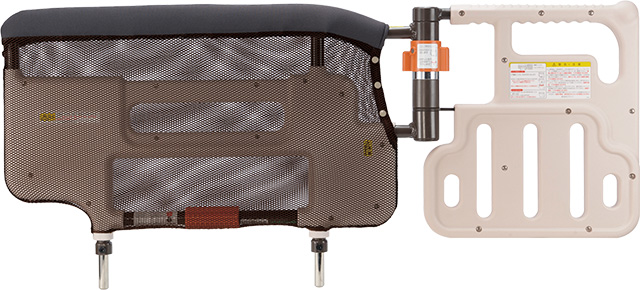
Specifications
| Model | PF500-116S |
|---|
Specifications
| Model | PF500S-116 |
|---|
A paralyzed arm also means that the patient loses feeling in their arm. The patient may accidentally break their arm if the patient continues to lift their back without realizing their arm is pinched. This can be prevented with the Safety Cover.
